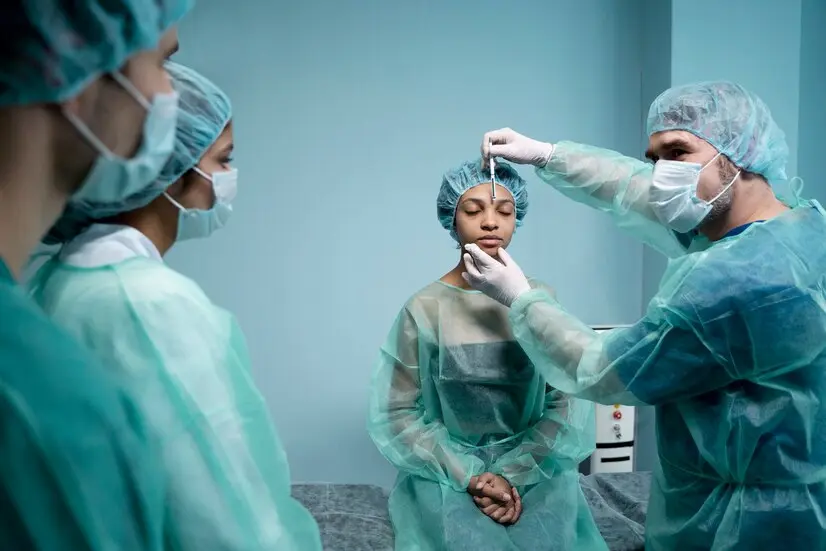Introduction: The Growing Trend of Natural Skincare in Peru
In the beauty and skincare industry, there is a noticeable shift towards more natural and organic products, and Peru has embraced this movement wholeheartedly. Known for its rich biodiversity, Peru offers an abundance of natural ingredients, and one that stands out is papaya. This tropical fruit, packed with essential vitamins and enzymes, has long been used for its skincare benefits.
One of the most intriguing academic endeavors in Peru today is the development of “crema hidratante de papaya en Perú tesis doctoral” or the study of papaya-based moisturizing creams. This research not only aims to explore the potential of papaya in skincare but also delves into the scientific rigor behind creating a viable and effective product. In this article, we’ll explore the journey of papaya from a traditional skincare ingredient to a subject of modern scientific research, focusing on its potential benefits and the role of a thesis doctoral in formulating a papaya-based moisturizing cream.
Papaya’s Historical and Cultural Significance in Peru
Before diving into the scientific aspects, it’s important to understand the cultural significance of papaya in Peru. For centuries, Peruvians have utilized papaya in their traditional skincare routines. The fruit’s ability to soothe the skin and provide nourishment was discovered long before modern research validated its effectiveness.
Papaya is not just a skincare product; it’s deeply woven into the culture and natural medicine practices of the country. From its use in local remedies to being a staple in traditional beauty rituals, papaya has always been cherished for its healing properties. Exploring its role in skincare from a cultural perspective adds a layer of depth to its modern-day relevance in products like “crema hidratante de papaya en Perú tesis doctoral.”
The Nutritional Profile of Papaya: A Superfruit for Skincare
Papaya’s reputation as a skincare powerhouse is attributed to its rich nutrient profile. The fruit is abundant in vitamins A, C, and E—each playing a vital role in promoting skin health. Vitamin A helps to repair damaged skin, while Vitamin C, a strong antioxidant, protects the skin from free radical damage and boosts collagen production. Vitamin E provides deep moisturization and reduces the appearance of fine lines.
The key enzyme in papaya, papain, is a natural exfoliant that helps in removing dead skin cells, revealing brighter and smoother skin. In the context of “crema hidratante de papaya en Perú tesis doctoral,” these components are studied for their synergy in creating an effective moisturizing cream. The thesis would explore how to maximize the concentration of these nutrients to enhance the cream’s effectiveness while maintaining stability and safety.
The Process of Developing a Papaya Moisturizing Cream: From Research to Formulation
The development of “crema hidratante de papaya en Perú tesis doctoral” involves multiple stages of research and experimentation. The initial phase is focused on understanding the existing body of knowledge about papaya and its skincare benefits. Researchers conduct literature reviews, studying previous research to gain insights into the chemical properties of papaya and its interaction with the skin.
Following this, the formulation phase begins. Researchers experiment with various combinations of papaya extract and other natural ingredients to create the ideal moisturizer. The formulation process is meticulous, ensuring that the papaya extract retains its beneficial properties while being effective as a hydrating cream. Factors such as the extraction method, concentration, and compatibility with other ingredients play a significant role in achieving the desired result.
Testing and Analyzing the Efficacy of Papaya Cream
Once a formula is developed, the next step is rigorous testing. A “crema hidratante de papaya en Perú tesis doctoral” would likely involve clinical trials, where the cream is tested on real participants to assess its effectiveness over time.
The main parameters measured in these trials include hydration levels, skin elasticity, reduction of fine lines, and improvement in overall skin texture. Through data collection and analysis, researchers can determine whether the papaya-based moisturizer delivers the promised benefits. This phase also identifies potential side effects or allergic reactions, ensuring that the product is safe for widespread use.
Sustainability and Ethical Sourcing of Papaya for Skincare
An often-overlooked aspect of papaya-based skincare research is the sourcing of papaya. The sustainability of papaya farming is a crucial consideration in the development of “crema hidratante de papaya en Perú tesis doctoral.” Ensuring that the papayas used in the cream are sourced in an environmentally friendly manner is key to making the product ethically sound.
The research might delve into the best farming practices, promoting fair trade and organic farming methods. Sustainable practices not only protect the environment but also ensure that local farmers in Peru benefit economically. Furthermore, ethical sourcing supports the overall quality of the papaya used, as high-quality, naturally grown papayas produce better skincare products.
Challenges in Scaling Papaya-Based Skincare
While developing “crema hidratante de papaya en Perú tesis doctoral” on a small scale is achievable, scaling up the production presents a series of challenges. One significant hurdle is the preservation of the natural ingredients. Papaya extract is highly perishable, and without synthetic preservatives, it can lose its potency over time.
Ensuring that the final product remains effective and stable during mass production is a key focus of the thesis. Researchers explore different preservation methods, such as refrigeration or the use of natural stabilizers, to ensure that the moisturizing cream retains its quality from production to delivery to the consumer.
Additionally, allergic reactions to papaya can be a concern for some individuals. This risk requires thorough testing and the development of hypoallergenic formulas that cater to sensitive skin types. The research would explore ways to mitigate such risks while maintaining the cream’s effectiveness.
The Market Potential of Papaya-Based Skincare Products
The potential for papaya-based skincare products in Peru and beyond is significant. With the increasing consumer demand for natural and organic skincare solutions, “crema hidratante de papaya en Perú tesis doctoral” is poised to become a key player in the market.
A comprehensive market analysis forms part of the thesis, assessing consumer attitudes toward papaya as a skincare ingredient. Through surveys and focus groups, researchers can gauge the willingness of consumers to embrace papaya-based products. Insights from this research can guide the formulation of marketing strategies and help local businesses expand into international markets.
The Impact of Papaya Skincare on the Peruvian Beauty Industry
The successful development of papaya-based skincare products could have a profound impact on the Peruvian beauty industry. It would not only enhance the country’s reputation as a hub for natural skincare but also provide a boost to local businesses and farmers. With scientific backing for the efficacy of papaya in skincare, more companies are likely to adopt papaya in their formulations, leading to a wider variety of papaya-based skincare products.
This innovation could also lead to export opportunities, with Peruvian skincare products gaining attention in international markets. The research conducted in “crema hidratante de papaya en Perú tesis doctoral” could be the catalyst for a new wave of Peruvian skincare brands that emphasize the country’s rich natural resources.
The Future of Papaya in Skincare: Further Research and Innovation
The research presented in a “crema hidratante de papaya en Perú tesis doctoral” is just the beginning. As the field of natural skincare continues to evolve, there is ample opportunity for further research to uncover new uses for papaya and improve the effectiveness of papaya-based products.
Future studies could explore the use of papaya in other types of skincare products, such as anti-aging creams, acne treatments, and brightening serums. As more data becomes available, it’s likely that we’ll see even more innovative applications of papaya in skincare formulations.
Conclusion: Embracing the Future of Natural Skincare with Papaya
The development of “crema hidratante de papaya en Perú tesis doctoral” highlights the growing importance of natural skincare ingredients, particularly in regions with rich biodiversity like Peru. Through rigorous academic research, papaya is being positioned not just as a cultural tradition, but as a powerful, scientifically-backed ingredient in modern skincare products.
By exploring papaya’s nutritional benefits, the development process, and market potential, this research provides valuable insights into how natural ingredients can play a leading role in the skincare industry. As the demand for organic and sustainable beauty products continues to rise, the future of papaya-based skincare looks promising.


